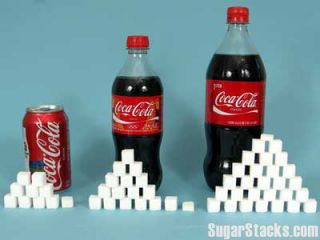
In last week’s blog, I confessed that I am a recovered sugar junkie. This week, I am going to tell you how I got off the sugar so I could get on with my life.
1) I went cold turkey – this was mentally excruciating, but worth it in the end. By cold turkey I meant that I stopped eating the following: ice cream, cake, cookies, candy, chocolate, and anything else with refined sugar (cane or beet sugar) in the ingredient list. This includes ‘fake sugars’ like Nutrasweet, Splenda, Equal, Truvia, etc. I even gave up sweet fruit (so no dates, apples, bananas, pineapples, etc. – tomatoes and avocados were still okay) and sweet vegetables (like sweet potato). Because I was an extreme case, I did this for several months. You might not need that much time – the key is, give up sugar until the cravings go away and then add two weeks to that. So if your cravings stop after 2 weeks, wait 4 weeks before re-introducing sugar. This allows time for your physiological and psychological cravings to cease and allows time for your taste preferences to change as well.
2) I found another coping mechanism – before I quit sugar, food was my coping mechanism. Have a bad day? Have a chocolate bar. Have a good day and want to celebrate? Have a chocolate bar. You get the idea. When you take away your primary coping mechanism, you have to replace it with something else. For me, it was exercise. For you, it might be talking to a friend or journaling. Just make sure it’s not food – not even non-sugary foods – by replacing chocolate with biscuits and gravy, alcohol, or nicotine, you’ve just replaced one unhealthy addiction with another (trust me, I’ve been there – there was a time I subsisted on biscuits and gravy).
3) Re-introduce gradually – I started with 1 piece of fruit (I think it was an apple). Then I waited two days to see how my body reacted to that fruit. Then I tried a different fruit. Waited two more days before trying yet another fruit. I did this until I got through all of the fruits and sweet vegetables. This gave me knowledge of what my body would and would not tolerate. Apples were great, but bananas sent me into a tailspin.
4) Make sure you’re eating a healthy diet (go

to http://myplate.gov/ if you don’t know where to start) and eating regularly so your blood sugar doesn’t get too low – sugar addictions can be triggered by malnutrition. If your body is not getting what it needs (especially if you are on a calorie restrictive diet), it will make you crave fast-acting energy in the form of sugar. That’s just the way the body works. So don’t skip meals or skimp on calories too much or you will likely end up making a beeline for the closest Snicker’s bar.
5) Do periodic check-ins – I wish I could tell you that once I eliminated sugar, it was out of my life forever. But it’s like a nasty ear infection that won’t go away – that addiction keeps coming back. In times of stress, I still crave chocolate. I’m not saying you can never eat chocolate again – I do sometimes – but you need to make sure it’s not your coping mechanism.
That’s how I beat my sugar addiction in a nutshell. It’s wasn’t always easy and it certainly wasn’t’ pretty, but I overcame sugar beast and you can too. If you need help or further information, feel free to contact me through Psychology Today’s website.

